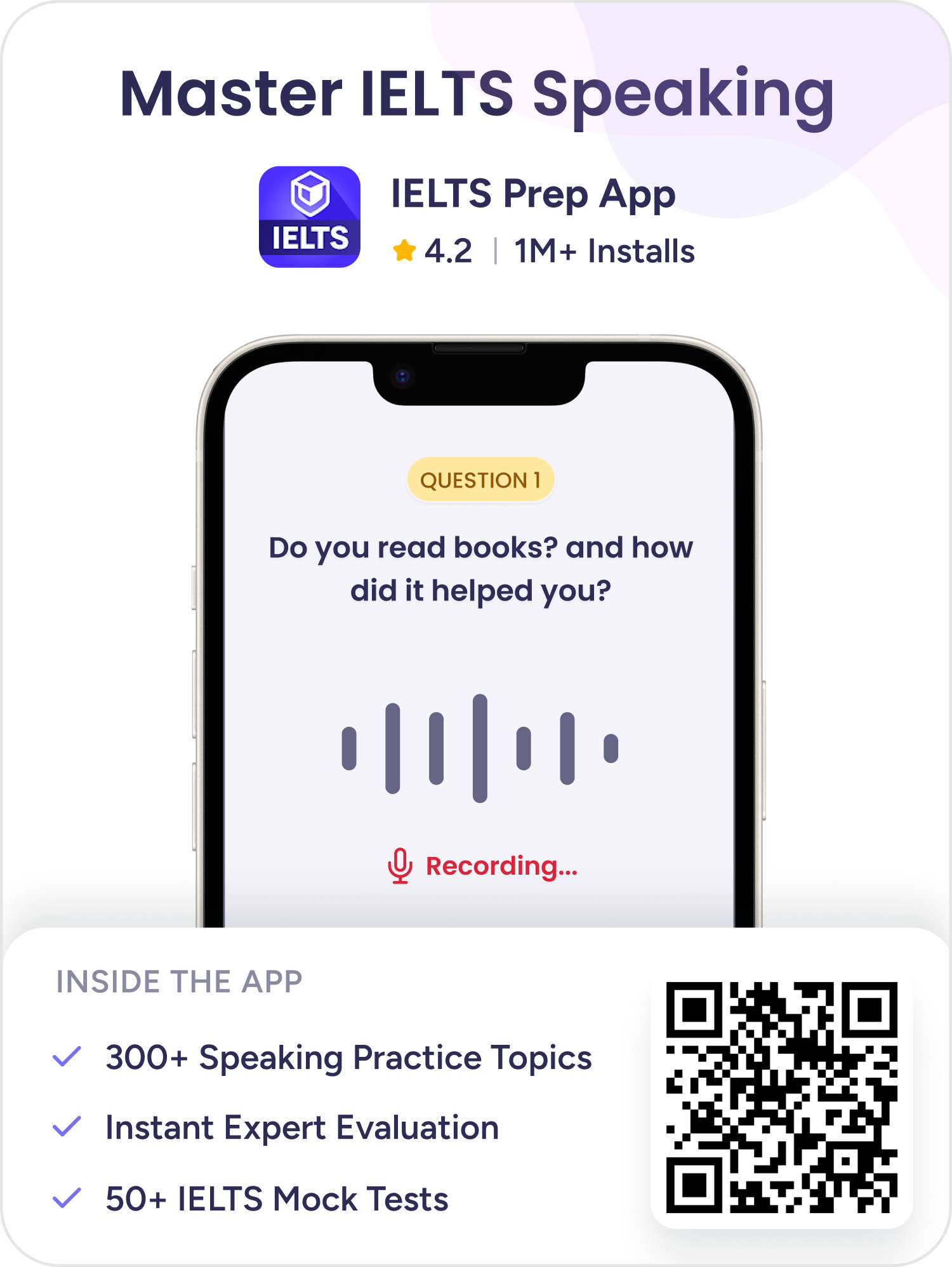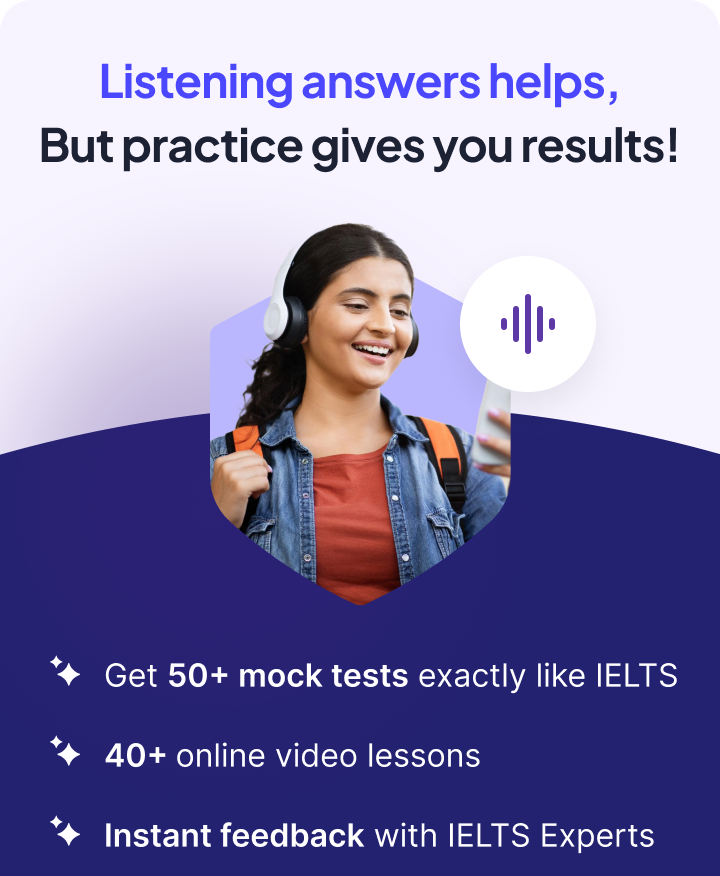Describe your favorite shop.: IELTS Speaking Cue Card
You should say
- What does it sell?
- Where is it?
- What sort of people go there?
- Why do you like it?
42 unique answers with expert feedback
Band 7
00:00
/
00:00
Follow up questions
Follow up questions
What other types of shops do you enjoy visiting?
How important is the ambiance of a shop to you?
Do you prefer shopping in physical stores or online?
Band 6-7
00:00
/
00:00
Follow up questions
Follow up questions
What do you think makes Zara different from other clothing brands?
How often do you shop at Zara, and what do you usually buy?
Do you think online shopping is better than shopping in-store? Why?
Band 6-7
00:00
/
00:00
Follow up questions
Follow up questions
What types of shops do you usually prefer to visit?
How important is the location of a shop to you?
What do you think makes a shop successful?
Practice other cue cards
Band 6-7
00:00
/
00:00
Follow up questions
Follow up questions
What do you usually look for when you visit a shop?
How do you feel about online shopping compared to physical stores?
What factors influence your choice of a favorite shop?
Band 6-7
00:00
/
00:00
Follow up questions
Follow up questions
What types of books do you enjoy reading the most?
How do you think bookstores contribute to the community?
What is your favorite stationery item and why?
Cue 1:What does it sell?
- Begin by describing the main products or services offered by the shop.
- Mention any unique items or specialties that make this shop stand out.
Example
My favorite shop is a quaint little bookstore that sells a wide variety of books, from fiction to non-fiction. They also have a special section for local authors, which I find quite unique and appealing.
Cue 2:Where is it?
- Provide details about the location of the shop, including the city or neighborhood.
- Mention any landmarks or notable places nearby that help identify its location.
Example
The shop is located in the heart of Connaught Place in New Delhi, just a few steps away from the famous Central Park. It's easy to spot because of its bright blue sign and cozy outdoor seating area.
Cue 3:What sort of people go there?
- Describe the typical customers who visit the shop, including their age group or interests.
- Mention any specific events or gatherings that attract people to the shop.
Example
The shop attracts a diverse crowd, from students looking for affordable textbooks to older adults seeking rare finds. They often host book readings and signings, which draw in many local literature enthusiasts.
Cue 4:Why do you like it?
- Share personal reasons for your fondness for the shop, such as the atmosphere or customer service.
- Mention any memorable experiences you’ve had there that contribute to your preference.
Example
I love this shop because it has a warm and inviting atmosphere. The staff are incredibly friendly and always ready to recommend a good book. One of my favorite memories is when I attended a poetry reading there and met some amazing local poets.
Conclusion
- Summarize your overall feelings about the shop and its significance to you.
- Mention how often you visit and any future plans you have related to the shop.
Example
In conclusion, this bookstore is more than just a place to buy books for me; it's a community hub where I feel connected to fellow book lovers. I try to visit at least once a week, and I look forward to their upcoming events.
Following this structure will ensure you cover all the essential points while providing a clear and engaging response to the cue card topic.
Tips to answer this Cue Card
1: Avoid Vague Descriptions
Using vague language can make your answer less engaging and informative. Specific details help the examiner understand your favorite shop better and make your response more memorable.
Tip
Include specific examples, such as the types of products sold and unique features of the shop, to paint a clearer picture.
2: Don't Rush Your Answer
Speaking too quickly can lead to unclear communication and missed points. It's important to take your time to articulate your thoughts clearly.
Tip
Practice pacing your speech by pausing briefly between points to ensure clarity and coherence.
Neglecting Personal Connection
Failing to explain why you like the shop can make your answer feel incomplete. Personal connections add depth and interest to your response.
Tip
Share a personal story or experience related to the shop to illustrate your feelings and make your answer more engaging.
IELTS Cue Cards asked last week
Reported by Leap students who gave IELTS
All Answers
Here are all the answers by real-users practicing speaking for IELTS Cue Cards on our IELTS Prep App.
Band 7
Band 6-7
Band 6-7
Band 6-7
Band 6-7
Band 6-7
Band 6-7
Band 6-7
Band 6-7
Band 6-7

Explore
473 Cue Cards

Personal Experience
121 Cue Cards

Describing People
66 Cue Cards

Travel
47 Cue Cards

Personal Development
45 Cue Cards

Hobbies/Interests
44 Cue Cards
Environment/Culture
39 Cue Cards

Tech/Media
27 Cue Cards

Education/Work
19 Cue Cards

Social Issues
19 Cue Cards

Describe An Object
16 Cue Cards
Business/Shopping
16 Cue Cards

Food/Cooking
8 Cue Cards
Fashion
6 Cue Cards
Get the IELTS Prep App
4.2
1M+ Installs
Get the IELTS Prep App
4.2
1M+ Installs
Get the app link on your phone
Or download app from





